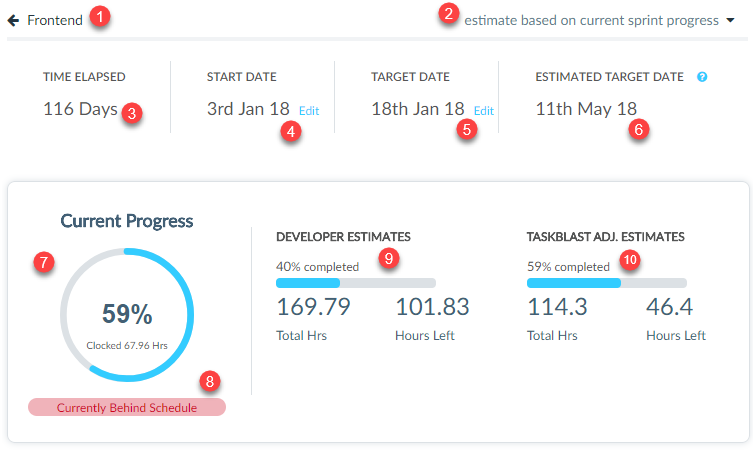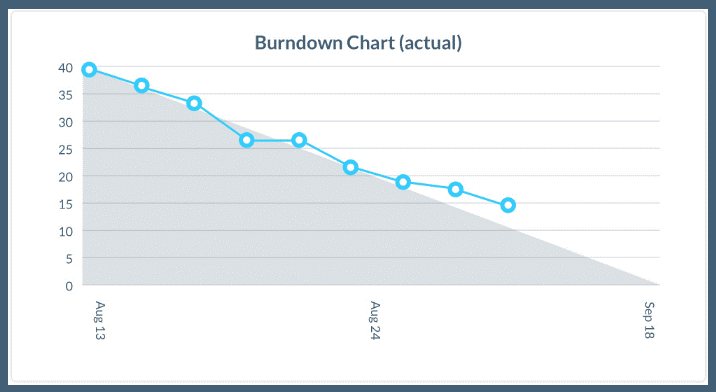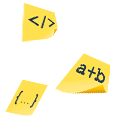Sprint Progress – Stats
The sprint progress view helps identify the expected hours and likely finish date of the current sprint by analyzing various data including each individual developers’ previous estimates and actual time, the velocity and more.

1 – Return to sprint management
2 – Estimate based on current sprint or multiple recent sprints
TaskBlast can calculate the estimates based on the current project information only or it can use the last few recent sprints. The latter should be more accurate but initially until you have completed 4 or 5 sprints you should use the “estimate based on current sprint”.
3 – Days Elapsed since the project start date
4 – The start date of the project
This can be edited by clicking on the edit link. You can also edit the sprint start and end date from the sprint management view by clicking on edit.
5 – The Target date to finish the project
This is the date you plan to finish the project by.
6 – The estimated target date the project is expected to finish
This is calculated based on your current velocity and after taking into account the developers previous estimates and actual. It then calculates what date the project is expected to finish based on the current available data.
7 – Current Progress
The % complete is calculated based on the total hours and hours left for adjusted estimates. Adjusted estimates is explained in section 10. It also displays the total hours clocked under the % complete.
8 – Behind or On Schedule
A badge will indicate if the project is on track or if it is behind schedule. It does this by comparing the estimated target date with the target date you set.
9 – Developer Estimates
The total hours and hours left are based on the developers estimates and the number of hours currently left. There is no adjustments to these values and they assume the developers estimates are accurate.
10 – TaskBlast Adjusted Estimates
The adjusted estimates do not take the developers estimates for granted. Instead they use historical data from each individual developer and if a developer has consistently taken 50% more time than his estimates then it will adjust the total hours to reflect this. In theory this should give you a more accurate estimate on the total hours, hours left and the expected finish date.
It continually adjusts so if your developers get more accurate over time, it will reduce the adjustment.
Burn-down Chart
The burn-down chart shows the actual number of hours left on any given day and then it analyses the number of hours per day you averaged during the last 5 sprints to project how many hours will be left every day going forward until the project is completed. All data to the left of today’s date is actual data, all data to the right of today is projected.







